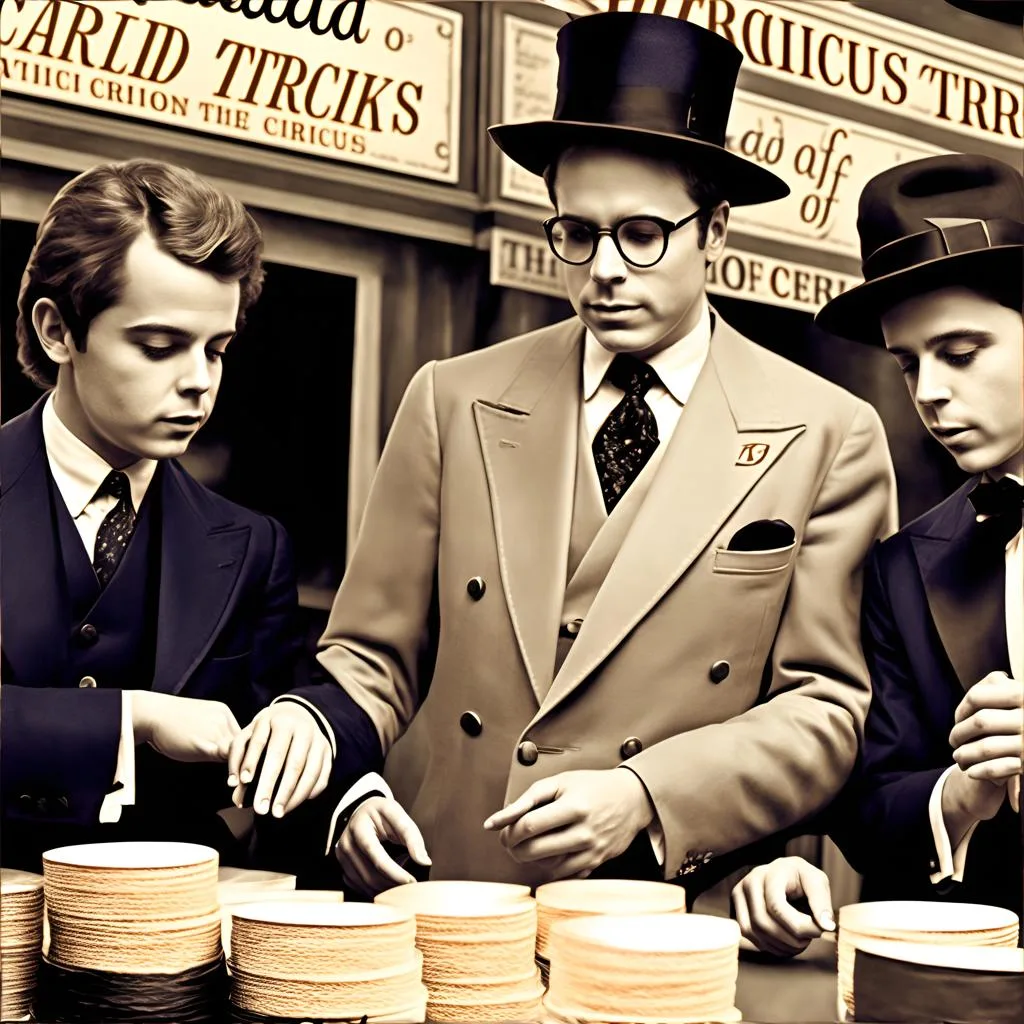
Card tricks have always been a popular form of entertainment, captivating audiences for centuries. One of the most well-known card tricks is the “two-card Monte,” where a trickster shows two cards and asks the audience to keep track of them as they are shuffled around. In this article, we will discuss how a con artist named Eddie Fields used a second deal to pull off a successful two-card Monte scam in Chicago during the 1940s.
Eddie Fields: A Master of Card Tricks and Crowd Manipulation
Eddie Fields was a seasoned con artist who knew how to work a crowd. He was able to spot the best marks and play them like a piano. His secret was in the simplicity of his card trick, which he called “The Glide.” The trick involved bringing both aces back together after they had been separated.
Eddie would enter a bar and establish himself as a loud, friendly character who would try to get a little gambling action going with a few bar bets. His partner would settle somewhere close to Eddie while he worked the crowd. If Eddie’s partner felt the room was ripe, he’d give a signal; Eddie would produce a pack of cards and go to work regaling fellow drinkers with simple miracles.
Eddie would hustle free drinks by performing stunts with olives, forks, drinking glasses, and sugar cubes until he was firmly recognized as the bar big-mouth. Once the crowd was ready, Eddie would pull The Circus Card Trick, an ingenious sucker trick designed to win money in the right circumstances. But for this con, Eddie didn’t pick a stranger to swindle. He pointed to his secret partner, had him choose a card and by the end of the trick, Eddie’s partner had taken the bait and lost a lot of cash.
The Second Deal: A Key Sleight of Hand in Card Tricks
A second deal is a card sleight where the dealer pretends to deal the top card but instead deals the second card. This allowed Eddie to remove the cards from between the two black aces right under the audience’s noses.
During a performance, Eddie employed a second deal to accomplish the same effect. To execute the scam, Eddie had his partner place a few cards onto the first ace while he showed the second ace to the audience. While everyone was distracted, Eddie put a tiny bend in the second ace and replaced it on the lower half of the deck, supposedly on top of the first black ace. He then completed the cut and had the deck cut a few times by people at the bar.
When the deck was returned, Eddie looked for the bent corner and dealt cards face up until he reached the first black ace. He then used the second deal to deal cards face up until he reached the ace that had been buried by his partner. Once he dealt that second ace, the other black ace was already waiting on top. To the audience, there was no way the aces could still be together.
The Art of the Con: How Eddie Fields and His Partner Worked the Crowd
Eddie and his accomplices followed his lead, pressing the crowd’s buttons and waiting for someone to cover his bet. They did every time, and when the smoke cleared, the crowd’s money was gone along with Eddie and the other stranger, never to return.
Card tricks continue to be a popular form of entertainment, but it’s important to remember that not everything is as it seems. Eddie Fields’ use of a second deal allowed him to pull off a successful two-card Monte scam. His simple card trick, combined with his ability to work a crowd, made him a successful con artist.
In conclusion, the art of card tricks and the mastery of crowd manipulation played a significant role in Eddie Fields’ successful con. By understanding the psychology of his audience and employing a second deal, Eddie was able to swindle unsuspecting bar patrons out of their money. As card tricks remain a popular form of entertainment, it serves as a reminder to always be cautious and vigilant, as not everything may be as it seems.




